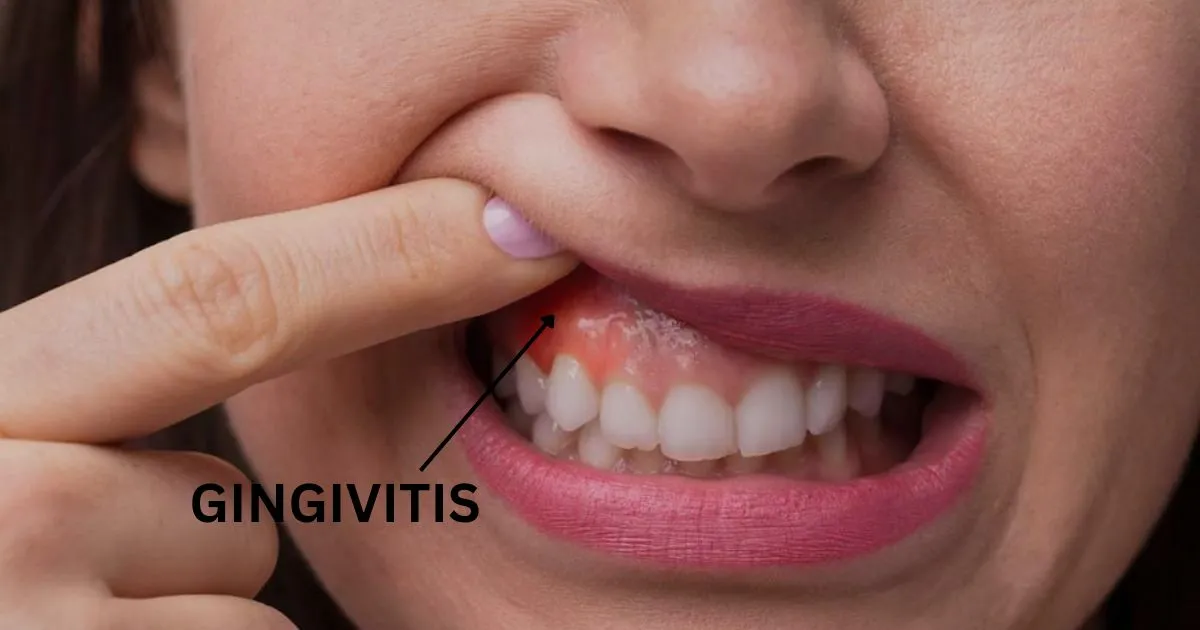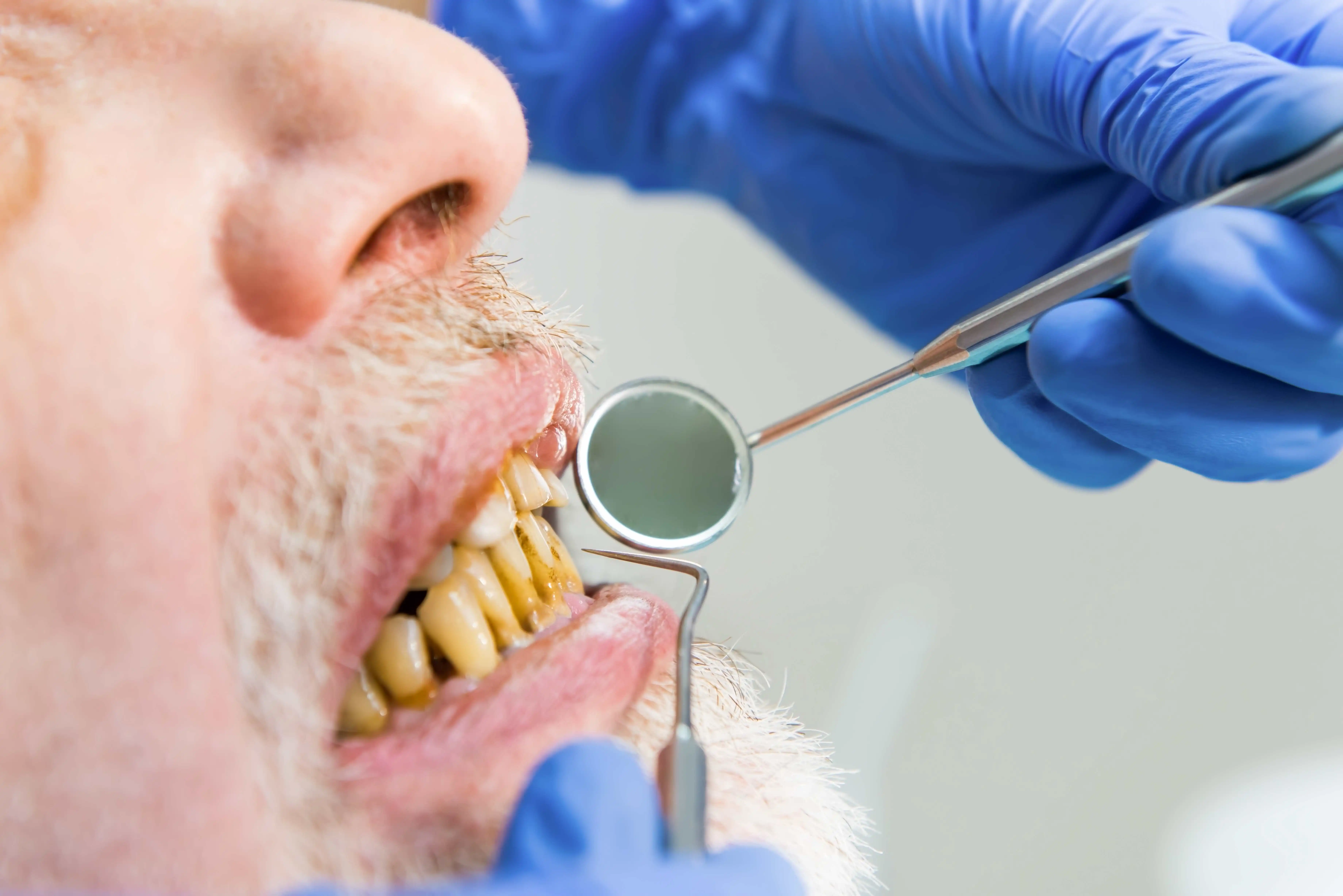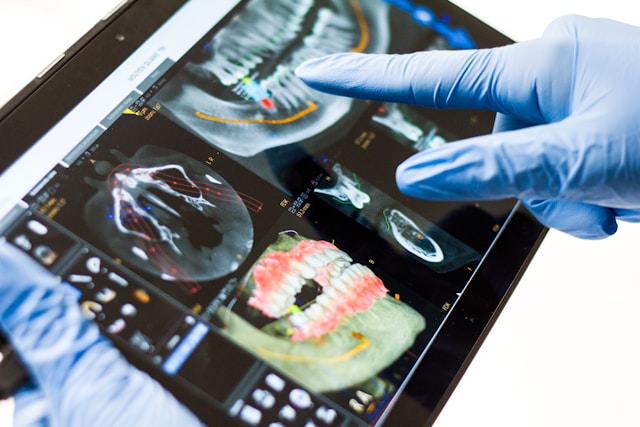Are swollen and bleeding gums giving you a hard time? If so, then you’re not alone as according to the CDC, periodontal disease affects almost half of Americans over the age of 30.
The end result of this gum disease is unfortunate, as it results in severe tooth and tissue loss when left untreated. Imagine attending an official meeting with your client or a grand ceremony with a gaping hole between your teeth. Tooth loss caused by periodontal disease can bring down your confidence, leaving you feeling low and depressed.
At RiverRock Dental, we use a variety of treatment options to check the progress of periodontal disease and restore your oral health. You just need to be aware of the symptoms and schedule an appointment for proper diagnoses and treatment.
This blog will cover everything you must know about periodontal disease and how to recognize its symptoms early on.
What is Periodontitis?
Periodontitis is a severe form of gum disease. It’s a bacterial infection that inflames the soft tissues around your teeth. If left untreated, it erodes the bones supporting your teeth, leading to mobility and tooth loss.It affects more than 47% of adults in the U.S. over 30 years. This figure nearly jumps to approximately 70% for adults over 65 years.
Periodontitis is relatively uncommon in people under the age of 30. It’s more likely to occur as you grow older. However, remember that it can still affect anyone with poor oral hygiene, irrespective of their age.
Some people are also genetically more prone to periodontal disease than others. For example, you’re more likely to inherit it from your ancestors if you have a history of gum disease in the family
The Four Major Stages of Periodontal Disease?
Sometimes, when the signs of periodontal disease start appearing, they can be a bit hard to notice. As the infection worsens, the symptoms become more evident, however, by this point, you may end up losing a tooth or two.
Following are the four stages of periodontal disease. The sooner you recognize these symptoms and get treatment, the better.
Stage 1: Gingivitis
 During the first stage, your gums swell and turn red. There is some bleeding, but the good part is there is no bone loss. Gingivitis is the result of poor dental hygiene and is also accompanied by bad breath. This condition can be quickly checked through improved dental care and treatment. So if you are facing this issue, your best option is to get treatment as soon as possible and also start practicing proper oral hygiene, i.e., brush at least two times a day and floss once daily. Also, try adding a strong, antibacterial mouthwash to your daily oral care regimen.
During the first stage, your gums swell and turn red. There is some bleeding, but the good part is there is no bone loss. Gingivitis is the result of poor dental hygiene and is also accompanied by bad breath. This condition can be quickly checked through improved dental care and treatment. So if you are facing this issue, your best option is to get treatment as soon as possible and also start practicing proper oral hygiene, i.e., brush at least two times a day and floss once daily. Also, try adding a strong, antibacterial mouthwash to your daily oral care regimen.
Stage 2: Early Periodontal Disease
If you do not take care of your gingivitis promptly, it may develop into early periodontal disease. Stage 2 of this disease comes with more gum bleeding. You still have time to treat the problem, as there is no bone loss or pain. However, at this stage, gingivitis has started to deeply erode the structures around the gum, and bone loss is imminent. Professional dental care is required to cure this. Therefore, if you experience any of these symptoms, you need to see a dentist right away.
Stage 3: Moderate Periodontal Disease
Stage 3 comes with some bone loss in your gums as the tissues around the bone start deteriorating by 20% to 50%. During moderate periodontitis, your gum starts healing, but the success rate is very low. At this point, your oral health is at stake, and therefore, needs immediate treatment.
Stage 4: Advanced Periodontal Disease
This stage is the most severe one, leading to 50%-80% of the affected teeth losing structural support from their roots. As the disease progresses further, it loosens your teeth, forms an abscess, and the gum becomes inflamed and painful. You can already imagine how hurting it might be.At this point, the patient is at high risk of losing their teeth, and eating becomes difficult. Nothing can be more heartbreaking than not being able to eat your favorite food.
While onset gum disease is challenging to spot, an expert can only notice it before it worsens. It is only possible if you have regular dental checkups scheduled at regular intervals, i.e., every 6 months or so. That’s why it’s important to visit a dentist if you notice any inflammation in your gums. The sooner you book an appointment, the better it will be for your oral health.
What Leads to Periodontal Disease?
The leading cause of periodontal disease symptoms is poor oral hygiene, due to which the bacteria in your mouth stick to the tartar and plaque on your teeth’s surfaces.
If you don’t clean and floss your teeth well or as often as you should, then bacteria can also invade the tissue underneath your gum line.
These harmful bacteria rot the supporting tissues of your teeth, leading to tooth loss, bone loss, and infections.
Periodontitis Treatment

Gum disease treatment depends on how severe your condition is. There are two options for treating periodontitis, i.e., surgical and non-surgical.
Non-Surgical Treatments for Periodontal Disease
Non-surgical options usually work well for patients with mild to moderate periodontitis. These treatments include:
- Antibiotics: The first non-surgical treatment starts with your dentist prescribing oral antibiotics to fight the infection.
- Scaling and Root Planing: This stage consists of a deep dental cleaning process that treats bacteria and gum diseases below your gum line. Besides cleaning, your dentist will also smoothen your teeth roots to prevent further plaque and bacteria formation.
Scaling and root planing generally take two or more dental clinic visits. You must see your dentist a month after this cleaning process to check how well your gum reacts to the treatment.
Surgical Options for Treating Periodontal Disease
You’ll probably need surgical intervention if you have moderate to severe periodontal disease symptoms. These surgical treatments include:
- Flap Surgery: The specialist makes an incision along your gum line during this procedure. They temporarily lift your gum tissue away from your teeth, which makes your teeth roots easily visible for tartar removal.
The gum tissue is then placed back in its actual position and stitched into place. This surgery decreases the size of the spaces between the affected teeth and gums, further reducing the areas for the bacteria to invade.
- Dental Bone Graft: If you have excessive bone loss, your dentist may recommend a dental bone graft. During this procedure, they’ll place bone-grafting material using fragments of either the patient’s bone, donated bone, or synthetic bone to replace the bone in the areas where you’ve lost bone tissue.
The graft acts as a structure for new bone growth. The objective is to reduce the risk of future infection and tooth loss.
- Soft Tissue Graft: This surgical procedure fills in places where the gums have been removed from teeth.
Your dentist will remove a piece of soft tissue from the roof of your mouth (palate) or create a flap covering the exposed portion of your teeth.
- Guided Tissue Regeneration: This surgery occurs when the bone surrounding the teeth has been destroyed. Guided tissue regeneration prompts gum tissue and bone growth.
Flap surgery is usually accompanied by GTR, with a mesh-like fabric inserted between the gum tissue and bone for separation.
- Bone Surgery: This surgery is performed in case of moderate and advanced bone loss. Shallow craters in the bone are smoothened out after the completion of flap surgery, preventing bacteria from accumulating while making it harder to increase.
Get Your Periodontitis Treated Successfully at RiverRock DDS
We’re impressed if you’ve made it through reading all of the periodontal disease symptoms and treatments! Learning so much information at once is challenging, especially regarding a gum disease diagnosis. Therefore scheduling a regular consultation with your dentist is a must.
Asking your dentist about gum disease therapies will increase your chances of saving your teeth and preserving your oral functioning and health.
Our dentists at RiverRock Dental will help determine your risk level and prevent future dental issues by providing optimum results and the highest comfort levels.
To schedule an appointment, call us at (952) 445-5556. You can also fill in this form, and we’ll get in touch as soon as possible!






